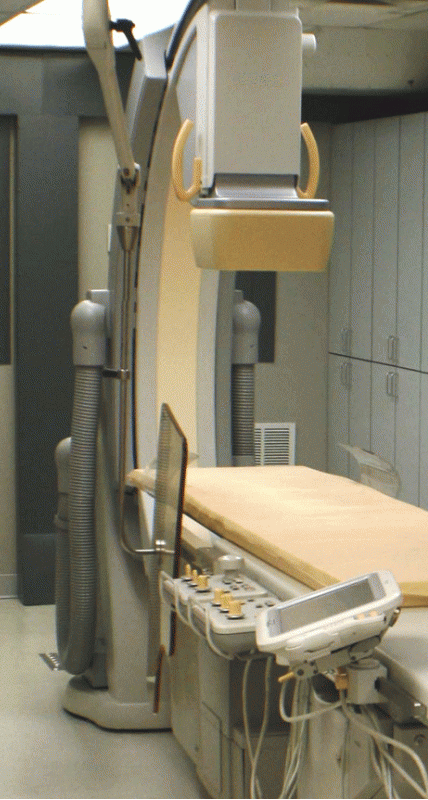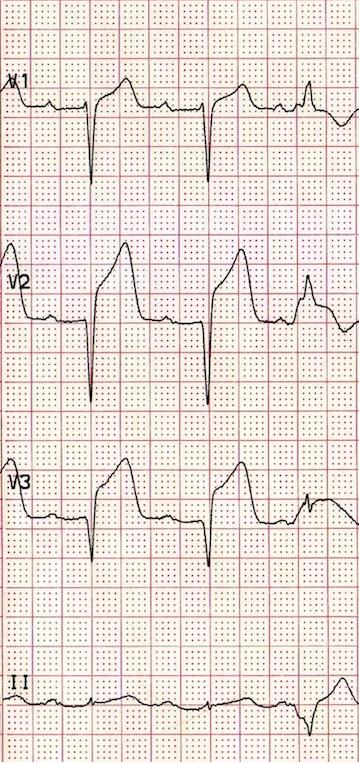Hemodynamics
Right Ventricular Pressure
Once the catheter is in the Right Ventricle (RV), you will notice the similarity of it's pressure to that of the Left Ventricle.
The RV pressure is best viewed at a 40 or 50 mm Hg scale (dependent on whay your monitor allows)
The RV pressure is generated by the pumping action of the right ventricle. Review the following components of the RV waveform.
Components of the RV waveform
- Isovolumetric Contraction - the point when the tricuspid valve closes and pressure rises in the ventricle from muscular contraction.
- Rapid Ejection - when pressure in the ventricle exceeds that of the pulmonary artery pressure, forcing the pulomonic valve to open, blood flows into the pulmonary artery. RV systolic pressure is measured at the peak pressure of the ejection phase.
- Reduced Ejection - ventricular pressure begins to fall, even while blood is still flowing into the pulmonary artery.
- Isovolumetric Relaxation - when ventricular pressure falls below the PA pressure, the pulmonic valve will close. A sharp decline in ventricular pressure is noted as the ventricular muscle begins to relax.
- Early Diastole - when ventricular pressure falls below the Right Atrium (RA), the tricuspid valve opens allowing a passive filling of blood into the right ventricle. The pressure in the right ventricle becomes equal to the pressure in the right atrium.
- Atrial systole - contraction of the atrium forces an additional 10 - 15% of blood volume into the ventricle. This increase in pressure results in an "a" wave.
- End-diastole - just before systole is the point of end diastolic pressure. This measurement is also known as the preload of the right side of the heart.

The RV is recorded as: peak systole/end diastole
Normal RV systolic pressure is 20 - 30 mm Hg.
Normal RV end diastolic pressure is 5 - 8 mm Hg.
Reasons for elevated RV systolic pressure
- Pulmonary Hypertension
- Pulmonary Stenosis
- Ventricular Septal Defect
Reasons for elevated RV diastolic pressure
- Right Ventricular Heart failure
- Constrictive pericarditis
- Cardiac Tamponade
Complications when measuring the RV
- Arrhythmia - related to right ventricular irritation from catheter.
References
- Baim, D.S. (2005) Grossman's Cardiac Catheterization, Angiography, and Intervention. (7th ed.). Philadelphia,Pa: Lippincott, Williams & Wilkins.
- Daily, E.K. and Schroeder, J.S. (1990) Hemodynamic Waveforms - Exercises in Identification and Analysis (2nd ed.). Philadelphia, PA: Mosby.
- Kern, M. et al (2003) The Cardiac Catheterization Handbook (4th ed.). Philadelphia, Pa: Mosby.

